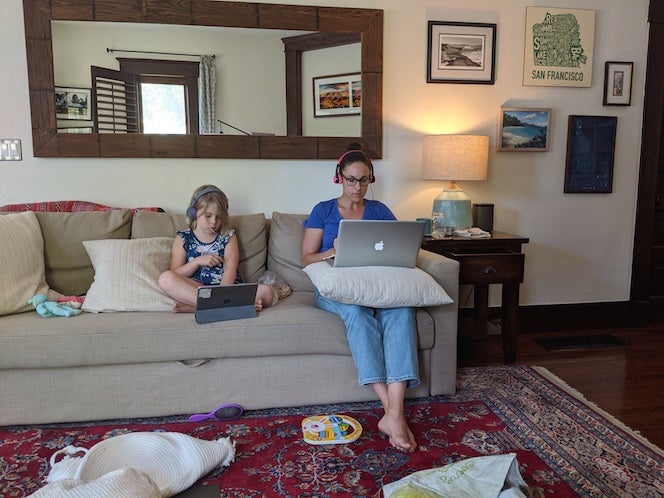Boise State University’s Computer Assisted Language Learning graduate certification program, or CALL, traditionally attracts K-12 language instructors who want to better their expertise in using technology in their classrooms.
The onset of the pandemic and remote learning made those skills even more timely than usual.
“The graduate student pool doubled from last summer,” said Kelly Arispe, an associate professor of Spanish in the Department of World Languages and director of the CALL graduate certificate program.

While she was preparing to teach Foundations of Technology-Enhanced Language Learning, a five-week online CALL graduate course in June, Arispe realized the topic could be helpful to a larger audience. She worked with administrators to open the course to Boise State faculty members. They could take the course in lieu of remote teaching courses designed by the Center for Teaching and Learning, freeing up more space in those courses for other faculty.
“While I wouldn’t wish the pandemic on anyone, one silver lining for me this summer has been to meet a critical need and support language educators who want their students to keep progressing towards improved language proficiency,” said Arispe. “In this case, it was especially timely since K-12 educators don’t know what the fall may bring and world language faculty are bracing to teach a fully online or hybrid course for the first time.”
Arispe ended up with a large class – 14 graduate students from three states and five school districts (what she called, “Team Blue”) and 25 faculty members from the Department of World Languages (“Team Orange”). Instructors ranged from K-16 levels, represented novice to advanced proficiency levels and nine languages.
Arispe showcased an array of technologies for instructors, including TedED and EdPuzzle. They allow faculty to upload a video and embed questions to check for students’ understanding. TedED offers a discussion board forum for intermediate/advanced learners. Both tools offer assessment reports so instructors can keep tabs on students’ progress.
“What I like the most about online learning is it enables equitable access to education,” said Yookyung Lee, an adjunct instructor of Korean. “All the students, who are active or reticent, can equally express their voices and have more opportunities and accesses to show their strength at their own pace. Maybe well-designed online teaching demands more time for instructors to prepare, but the outcome is definitely worth it.”

Arispe said her favorite assignment was grouping students by language and level, then asking them to create a welcome video for their course using Adobe Spark Video, then create a syllabus quiz using Google forms. Students had to share their videos, take the quiz and offer feedback. The assignment produced finished products that instructors will be able to use on the first day of class.
“I have to admit that my view of online learning was already in full transformation starting on March 13 when we had 48 hours to move our classes from classrooms to online. However, I feel more confident now in my ability to ensure students receive a quality education in remote synchronous mode of delivery,” said Mariah Devereux Herbeck, a professor of French. “What I have learned in this class – how to create TEDEd lessons, how to start a Google Sites for my classes, how to use graphic organizers in a Zoom synchronous meet and so much more – will still be so useful to me this fall when I teach my courses remotely, but also when we get back in the brick and mortar classroom.”
See more work created by Arispe’s class, read reflections from the summer of 2020.